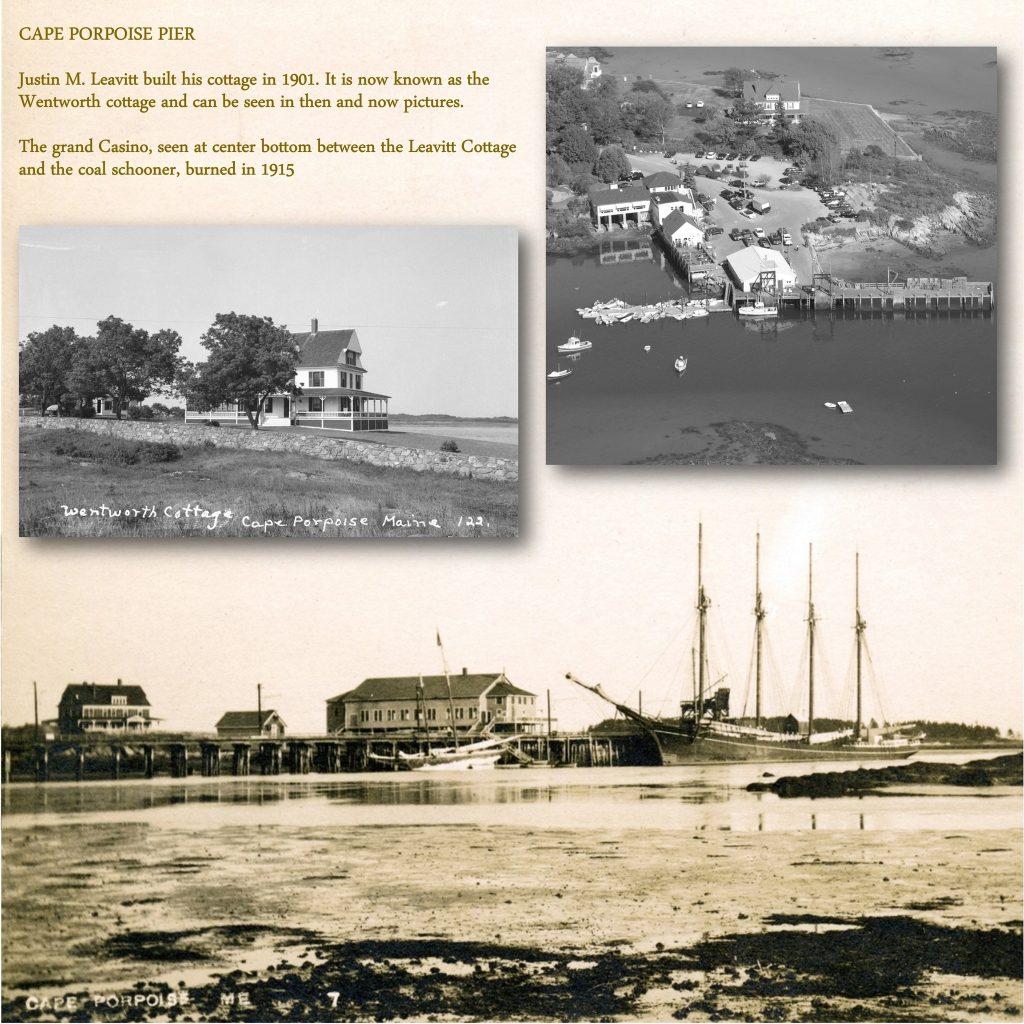Cape Porpoise Pier
Bickford’s Island, where the Cape Porpoise Pier now serves us all, was occupied in 1758 by Andrew Brown and his wife. One eighteenth century map we have at the Kennebunkport Historical Society refers to it as Brown’s Islands. Before 1800, John Bickford’s family lived there. Almost the whole island was sold to Seth H. Pinkham before the Civil War. The early house on the island was expanded into the first hotel there, the Shiloh House, which was run by Olivia White. It later became the Wabun Hotel but it burned to the ground in 1891.
The Cape Porpoise Land Company, affiliated with the Sanford and Cape Porpoise Railway, bought the Pinkham property as a destination for their electric trolley cars in 1898. Within two years they had divided the island into cottage lots and built a 55’ x100’ dancehall they called the casino. The point was to attract trolley riders to patronize the line to subsidize the coal delivery cars that were running between Cape Porpoise Pier and the Sanford factories.
Justin M. Leavitt purchased the cottage lot where the hotel had stood. He started building his beautiful cottage with wrap-around porches from which to enjoy the magnificent ocean views in 1900. The cottage was finished in July 1901 and underwent enlargement in 1904. Leavitt’s cottage still stands, though we now call it the Wentworth Estate. Justin had been the York County Registrar of Deeds for 20 years but had just resigned to accept an appointment as State Liquor Agent, but that is a different story. The Goodall and Marland cottages were also built in the early 1900s.
The growing popularity of automobiles took everyone by surprise. Ridership on the trolley declined and patronage at the Casino declined right along with it. The Casino burned to the ground on the last night of the 1915 season, a half-hour after the last guests had departed.



Leave a Reply